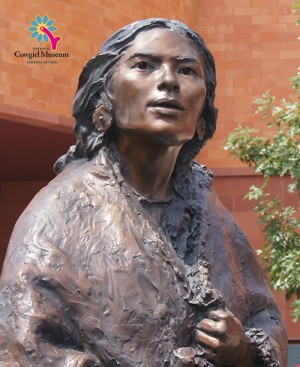From the Lamhi Shoshone tribe of the Idaho area, Sacagawea was captured by the Hidatsa tribe in 1800, when she was about 12 years old. She lived with the Hidatsa (in the what is now North Dakota) before she was sold or gambled away as a slave to a French-Canadian trapper and trader, Toussaint Charbonneau in 1804. Sacagawea became one of Charbonneau’s wives and gave birth to their son, Jean-Baptiste. Charbonneau was hired to join Lewis and Clark’s expedition in 1805 as an interpreter because of Sacagawea. While she did not speak English, she spoke Shoshone and Hidatsa. Her husband spoke Hidatsa and French. They interpreted as a team. The expedition departed in 1805. She was around the age of 17 with a two-month-old infant and the only female in the team, along with 33 men. Her knowledge of native languages proved essential in communicating with tribes along the way. She knew which plants were edible, providing both food and medicine. Her assistance became vital as she persuaded the Shoshone to supply horses and guides to the expedition to reach the Pacific. Her presence also allowed the company to pass safely through areas where tribes might have found a large group of white men threatening but were mollified by the sight of a young Shoshone woman and her child. The expedition travelled thousands of miles from the North Dakota area to the Pacific Ocean and back with Sacagawea providing a pivotal role in its success.

